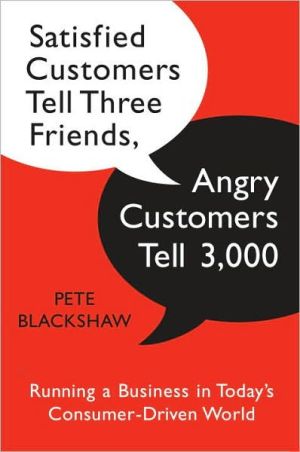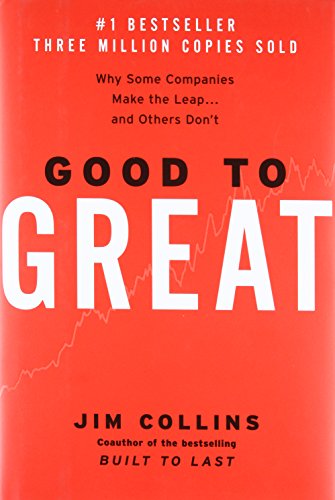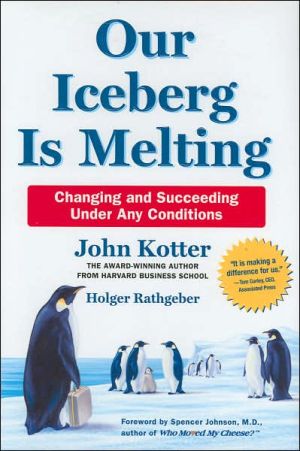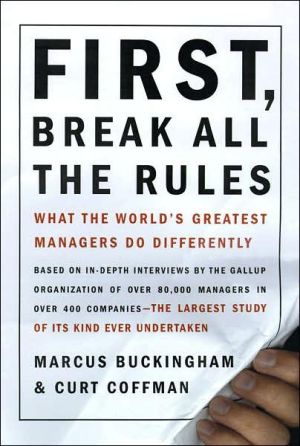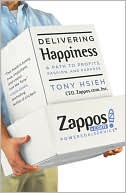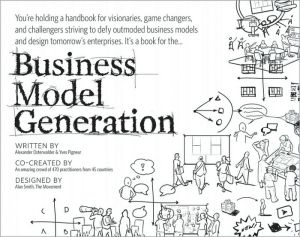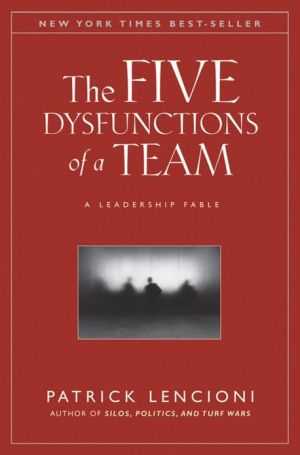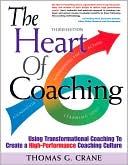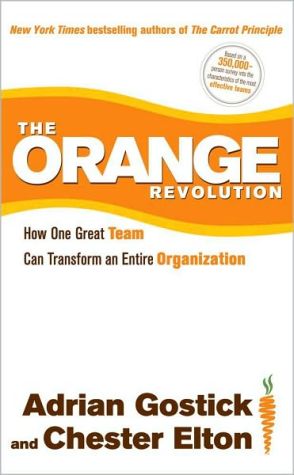Satisfied Customers Tell Three Friends, Angry Customers Tell 3,000: Running a Business in Today's Consumer-Driven World
In today's Internet-driven world, customers have more power than ever. Through what interactive marketing expert Pete Blackshaw calls "consumer-generated media"-blogs, social networking pages, message boards, product review sites-even a single disgruntled customer can broadcast his complaints to an audience of millions. Blackshaw shows managers, marketers, and business leaders how to establish and maintain credibility for their brand by being authentic, listening and responding to customers,...
Search in google:
New-media pioneer Pete Blackshaw contends that because anyone with a computer can broadcast an opinion to millions and derail a multibillion-dollar company or undermine a global brand, companies today need to build and maintain credibility on every front. Publishers Weekly In June 2006, a man named Vincent Ferrari had a shockingly combative conversation with an AOL sales rep; he recorded it and posted it on YouTube. More than 62,827 viewings later, AOL's reputation was irretrievably damaged. In the digital age, disgruntled customers are now in the driver's seat, argues Blackshaw in this thoughtful and engaging book. With the advent of Consumerist.com and other venues where customers can blow off steam about bad service or deficient products, consumer generated media is a force to be reckoned with. Since consumers trust other consumers above companies or brands, a company's success depends on its credibility and its ability to gain the trust and support of Web-savvy, outspoken and influential customers. Through remarkable stories of mass consumer advocacy and the power of bloggers and ordinary Joes with an Internet connection and a bone to pick, Blackshaw advises executives on how to build credibility into their businesses through blogs, Web sites and video postings. Informative, energetic and entertaining, this is a marvelous argument for corporate responsibility and accountability, interesting to laypeople and instructive for executives. (July)Copyright © Reed Business Information, a division of Reed Elsevier Inc. All rights reserved.
Chapter 1\ The Credibility of the Commons and the Core Credibility Drivers\ In his famous treatise "The Tragedy of the Commons," Garrett Hardin demonstrates the fundamental conflict between individual interests and the common good. Hardin describes how, when a plot of land is commonly available to all the farmers in a village, one farmer after another brings his livestock to graze, blind to the inevitable consequence of depleting the land through overgrazing. Writes Hardin:\ Adding together the component partial utilities, the rational herdsman concludes that the only sensible course for him to pursue is to add another animal to his herd. And another. . . . But this is the conclusion reached by each and every rational herdsman sharing a commons. Therein is the tragedy. Each man is locked into a system that compels him to increase his herd without limit--in a world that is limited.\ In the twenty-first century, consumers' attention, and trust, is like that commons--a limited resource that is easily depleted. In today's world of high-speed broadband and commercial-free TiVo, consumers have less attention and patience for advertising and marketing than ever before. Ad saturation, deceptive messaging, and mismanaged expectations contribute to consumers' dwindling trust in companies.\ So businesses must work even harder to maintain market share, reinforce brand messages, and communicate new ideas, in order to preserve their competitive advantage--in other words, get more use out of the commons than the other farmers. But when businesses simply spend ad dollars to buy awareness without developing strategies to cultivate credibility and earn trust, they will run into trouble. For there no longer exists a top-down relationship between businesses and consumers; while marketers used to have control over the message and could count on the masses to follow along whether they liked it or not, today, the consumer is the boss. In a speech given in October 2006, Charlotte Otto, global external relations officer for Procter & Gamble, said we are delusional if we think that, as communications practitioners, we can "control" the message or "manage the medium." "Now more than ever," she said, "consumers own our brands. Consumers own our messages. Consumers own the conversation about how, where, and if they invite our brands into their lives."\ Which brings us back to credibility. Credibility may not be on your balance sheet, but it's the best asset you've got. Credibility is the only valid currency in this vast and noisy marketplace. So what exactly constitutes credibility, and how do you learn how to harness it?\ Credibility in today's marketing environment is the product of six core drivers. Most of them are interrelated, but they require different strategies and tactics to fully realize. These critical credibility drivers are\ 1. Trust\ 2. Authenticity\ 3. Transparency\ 4. Listening\ 5. Responsiveness\ 6. Affirmation\ 1. Trust\ Trust is perhaps the most critical driver of credibility. Trust implies confidence, dependability, and faith in a company or product. It is achieved through honest, ethical, straightforward, consistent, and predictable business practices. Unfortunately, trust is a diminishing resource for today's businesses. As a 2004 study by Intelliseek and Forrester Research found, consumers trust other consumers far more than they trust companies or brands, and they consistently distrust marketing techniques used by brands. This finding was recently reaffirmed in a 2007 Nielsen global trust study. Virtually every global region lined up similarly.\ Trust is the credibility driver that is most closely linked to performance. After all, who is going to trust a product or service that doesn't perform as promised? Remember, a brand is a promise, and consumers assess brands by the extent to which they live up to that promise. Trust also includes an element of predictability. Consumers tend not to like nasty surprises. Ask yourself: Do your company's ad campaigns stretch the truth? Do your claims match what the product can actually do or deliver? Does your product or service consistently and predictably perform as promised? Companies that nurture trust with consumers can honestly answer yes to these questions.\ But this isn't always enough. It's important for companies to adhere to a policy of honest, straightforward communication on the Web as well. Companies with high levels of trust don't create blogs pretending to be written by consumers, they don't "seed" message boards with positive comments supposedly from consumers, and they always present truthful and useful information on their Web sites. As multiple studies conducted by Nielsen showed, brand Web sites are the second most "trusted" communications vehicles after word of mouth. And intuitively this makes sense: After all, Web sites are there to help consumers find information and solve problems.\ Here are five examples of how companies have established and maintained high levels of trust among their customers.\ Lands' End has built a name for itself by nurturing a trust-based relationship with consumers. The mail-order house's clothing and apparel consistently measure up to its claims, and the company is exceptionally responsive if consumers question that trust. It makes a sincere effort to manage every consumer response and to replace any unsatisfactory product. The Lands' End product guarantee is unconditional. It reads: "If you're not satisfied with any item, simply return it to us at any time for an exchange or refund of its purchase price. We mean every word of it. Whatever. Whenever. Always. But to make sure this is perfectly clear, we've decided to simplify it further. GUARANTEED. PERIOD." The Lands' End call center is attentive to all calls, and customer service is considered the highest priority. The company has 24/7 toll-free lines, and each of the 200,000 e-mails it receives annually gets a personal response. Lands' End Live even lets consumers talk or "chat" online directly with Lands' End call support folks while shopping at Landsend.com. Consumers trust that Lands' End's products and customer service will always meet or exceed their expectations, and the net result is extraordinary high levels of loyalty and an off-the-charts digital trail of positive consumer-generated media.\ Johnson & Johnson is another trusted company, with a hundred-year tradition of open, transparent communication, even in times of crisis. Johnson & Johnson produces thousands of branded health-care products, including toiletries, baby products, pharmaceuticals, and medical diagnostic equipment. Can you even compete in these categories without a heavy dose of trust in the equation? The former CEO James Burke's honest and sincere handling of the Tylenol tampering crisis in the early 1980s is legendary. The brand not only showed genuine compassion for the people who got sick from taking the tainted drugs but also took extraordinary steps to rebuild consumers' trust and confidence. When the brand was put back on store shelves, Johnson & Johnson changed its packaging to include three layers of tamper protection, two more than recommended by the Food and Drug Administration.\ Canon USA, maker of a range of electronics products, from camcorders to digital cameras, has set a higher bar for trust in a product category marred by high levels of frustration and distrust. While Canon's customer service operation suffers from many of the same troubles as the electronics industry as a whole, the company is building credibility through its commitment to quality and innovation. Canon spends approximately 10 percent of its net sales on research and development each year, nearly twice the percentage of its key competitors. High-quality products nurture trust, which is expressed by a preponderance of positive online ratings and reviews, as well as high levels of consumer loyalty and repeat purchase. Consumers respond favorably to the Canon sales force, one of the most skilled in the industry, and this too makes for fantastic CGM. As a result, Canon consistently outperforms other major electronics brands, was named among the most admired companies by Fortune magazine, and ranked number 25 of one hundred top brands by Business Week magazine.\ Southwest Airlines consistently tops the CGM charts on PlanetFeedback.com and receives consistent positive online buzz. This airline cultivates trust by carefully managing consumer expectations and making each and every business decision on the basis of its single product claim: low prices. In fact, when an employee suggested the airline might offer a light in-flight meal on the Houston to Las Vegas flight, founder and then CEO Herb Kelleher shot it down immediately because it would have driven up ticket prices. But consumers don't mind bringing their own snacks on a Southwest flight. Why? Because when they fly Southwest, they don't expect a luxury experience; instead, they trust they are getting exactly what Southwest promises: the lowest ticket prices, period. This credibility has gone a long way to generate positive CGM for the company and is one of the reasons why Southwest is one of the few airlines in the business to actually turn a profit.\ Mazda, on the other hand, is still reeling from the hit its credibility took when it was discovered that the "consumer blog" the company created was in fact a stealth effort by its advertising agency. Bloggers identified the deception immediately and tarred and feathered Mazda for the breach of trust. And because a digital trail is indelible, the backlash follows the automaker to this day; if you search "Mazda blog" on Google, all you will see is hostility. Mazda violated the trust principle and is still paying the price.\ 2. Authenticity\ A company that projects authenticity is one that is perceived to be real and sincere, consistent and genuine. Trust and authenticity, of course, are inextricably linked--consumers trust brands that come across as real and sincere. Authenticity is an especially important driver of credibility in the digital age, when consumers have more tools at their disposal to prove or disprove the claims a company makes. In a time when detailed information about companies' products, business practices, and histories is readily available, there is a much higher premium on authenticity.\ Authenticity is becoming increasingly important as consumers grow more and more cynical about advertising and brands. Now, even the most trusting consumers ask: Is the company real and sincere? Does it speak with a genuine voice or one that is phony and contrived? Are its motivations pure or manipulative? Does the company truly care about me?\ There are important nuances that affect perceptions of a company's authenticity. We're entering a new era of marketing, in which consumers are evaluating brands based on a much more stringent set of criteria, bringing their own values--and even causes--to the table. Here are three examples of ways companies have boosted their authenticity by appealing to the values of their core customers.\ Chick-fil-A, a fast-food restaurant chain, has earned an enviable mantle of credibility by doing things in an authentic way. At the root of its business is faith and unabashed belief in serving the Lord, and this principle guides how the company does business and serves its customers. All Chick-fil-A restaurants are closed on Sundays so that employees can spend the day in worship; unit managers are expected to contribute to the well-being of their community and their employees through servant leadership--leadership that focuses not so much on what I want as on how to help others get what they want. And as a result, despite being open only six days each week, Chick-fil-A has the highest annual average unit volume of any fast-food chicken restaurant in the nation. In fact, its unit sales compare favorably with those of McDonald's, Burger King, and Wendy's despite fifty-two fewer selling days per year.\ Northern California's Peet's coffee has seen remarkable growth in the past few years, primarily because it is viewed as a less corporate and more authentic brand than Starbucks. The Peet's brand appeals to the most fervent coffee lovers because it is sincere and genuine in its commitment to quality. I visited Peet's last year and witnessed the attention the company puts into every bag of coffee beans. The work is not outsourced; most of the testing takes place right at corporate headquarters in Emeryville, California. Inspectors diligently taste every batch of beans with the intensity of fine vintners. But Peet's authenticity goes beyond just picking and inspecting beans; the company employs a unique artisan roasting method. As its Web site states, "Developing these roasting skills takes time. . . . We require each of our roasters to make a ten-year employment commitment. A roaster is deemed to have enough experience to have truly mastered the craft only after three to four years of training. We roast by hand, not by computer. We roast in small batches, paying close attention to the individual characteristics that each coffee or blend requires. We roast all thirty-two of our coffees every day. And we roast to taste, not to color."\ To ensure its integrity, the company deliberately has not grown as fast as Starbucks; it views franchising as a potential compromise of quality and service. This approach has helped Peet's maintain a high level of authenticity among consumers.\ Ben & Jerry's (now owned by Unilever) has built a loyal customer base by being authentic about its commitment to giving back to the community. In 1985, the company used profits to establish the Ben & Jerry's Foundation, which at one point donated over $1.1 million each year to environmental and social causes and distributes grants to community-based action groups in the state of Vermont. Ben & Jerry's also takes stands on various social issues (such as fuel efficiency, peace advocacy, and support for small-scale family farms) on its Web site, and the company upholds its strong commitment to social justice and the environment in everything that it does. This authenticity resonates strongly with consumers who buy Ben & Jerry's ice cream because they view it as some sort of bridge between earth and man. It also helps that the company Web site maintains the down-to-earth vibe and folksy sense of humor that pervade the company's products--after all, it's hard not to like a company that lets consumers design their own flavors and names ice cream after rock musicians.\ In a perfect example of why you don't mess with authenticity, when Ben & Jerry's once tried to bring in a "professional" CEO to drive further growth, the move backfired, alarming both faithful customers and its own executive ranks. After a year, the experiment was declared a failure and the CEO was fired.\ 3. Transparency\ Today, through search engines such as Google and other popular research tools, such as Wikipedia, consumers can learn all there is to know about your company--not just about the external product but also about what goes into making it, such as product ingredients, business policies, executive compensation, and labor practices. Most Wikipedia entries for major corporations--such as McDonald's, Nike, P&G, Frito-Lay, and Coca-Cola--make it easy not only to find official statistics and facts about the corporation but also to link directly to third-party blogs, customer commentary, or other revealing documents. The Internet simply creates more exposure for companies and brands. So to win credibility and build consumers' trust, companies must be 100 percent transparent in everything they do.\ Transparent corporations are open about their practices and policies, and make their most relevant facts and data widely known (without releasing legally privileged information). Transparency involves openness and visibility, and it's increasingly important in the age of CGM.
Acknowledgments ixIntroduction 1The Credibility of the Commons and the Core Credibility Drivers 13The Consumer's the Boss: Today's New Consumer-Generated World 40Measuring CGM 62Not All Marketers Are Liars: Marketing and Advertising with Credibility 89Postcards from the Welcome Mat: Credibility and Your Web Site 106This Company May Be Monitored for Quality Purposes: Credibility in Your Product 122No Place to Hide: Credibility and the CEO 133The Neglected Stepchild: Consumer Affairs 149When Your Company Is Googled: Troubleshooting 162Epilogue 183Notes 187Index 188
\ Publishers WeeklyIn June 2006, a man named Vincent Ferrari had a shockingly combative conversation with an AOL sales rep; he recorded it and posted it on YouTube. More than 62,827 viewings later, AOL's reputation was irretrievably damaged. In the digital age, disgruntled customers are now in the driver's seat, argues Blackshaw in this thoughtful and engaging book. With the advent of Consumerist.com and other venues where customers can blow off steam about bad service or deficient products, consumer generated media is a force to be reckoned with. Since consumers trust other consumers above companies or brands, a company's success depends on its credibility and its ability to gain the trust and support of Web-savvy, outspoken and influential customers. Through remarkable stories of mass consumer advocacy and the power of bloggers and ordinary Joes with an Internet connection and a bone to pick, Blackshaw advises executives on how to build credibility into their businesses through blogs, Web sites and video postings. Informative, energetic and entertaining, this is a marvelous argument for corporate responsibility and accountability, interesting to laypeople and instructive for executives. (July)\ Copyright © Reed Business Information, a division of Reed Elsevier Inc. All rights reserved.\ \ \ \ \ From the Publisher"The concept of the potential damage resulting from negative publicity is especially powerful in James's strong narration." —-AudioFile\ \
